
The Untamed Beauty of Gesäuse National Park
Explore the unspoiled wilderness of Gesäuse National Park, Austria's treasure trove of rugged peaks, verdant valleys, and pristine rivers, perfect for adventure and tranquility.
Gesäuse National Park, located in the heart of Austria, is a haven for nature lovers and adventure seekers alike. The park boasts a dramatic landscape where towering limestone peaks meet lush, verdant valleys. The Enns River carves its way through the park, creating stunning gorges and offering thrilling white-water rafting opportunities. Whether you're a seasoned hiker or simply looking to enjoy a peaceful walk, there are numerous trails that cater to all levels of fitness and interest. The park is also home to diverse wildlife, including deer, chamois, and a variety of bird species. Birdwatchers will delight in spotting the golden eagle and peregrine falcon soaring above the cliffs. In addition to its natural wonders, Gesäuse National Park offers cultural experiences such as guided tours and educational exhibits that provide insight into the area's rich history and ecological significance. For those interested in photography, Gesäuse is a paradise. The changing light throughout the day creates an ever-shifting palette of colors, making it a perfect subject for capturing breathtaking landscapes. The park's remote location means it remains largely untouched, offering a sense of tranquility and escape from the hustle and bustle of daily life. Whether you're camping under the stars or staying in one of the nearby accommodations, Gesäuse National Park promises an unforgettable experience.
Local tips in Gesäuse National Park
- Visit during spring or autumn for milder weather and fewer crowds.
- Wear sturdy hiking boots as trails can be rocky and uneven.
- Bring binoculars for birdwatching opportunities.
- Check local weather forecasts before setting out on long hikes.
- Consider guided tours to learn more about the park's unique flora and fauna.
The Untamed Beauty of Gesäuse National Park
Gesäuse National Park, located in the heart of Austria, is a haven for nature lovers and adventure seekers alike. The park boasts a dramatic landscape where towering limestone peaks meet lush, verdant valleys. The Enns River carves its way through the park, creating stunning gorges and offering thrilling white-water rafting opportunities. Whether you're a seasoned hiker or simply looking to enjoy a peaceful walk, there are numerous trails that cater to all levels of fitness and interest. The park is also home to diverse wildlife, including deer, chamois, and a variety of bird species. Birdwatchers will delight in spotting the golden eagle and peregrine falcon soaring above the cliffs. In addition to its natural wonders, Gesäuse National Park offers cultural experiences such as guided tours and educational exhibits that provide insight into the area's rich history and ecological significance. For those interested in photography, Gesäuse is a paradise. The changing light throughout the day creates an ever-shifting palette of colors, making it a perfect subject for capturing breathtaking landscapes. The park's remote location means it remains largely untouched, offering a sense of tranquility and escape from the hustle and bustle of daily life. Whether you're camping under the stars or staying in one of the nearby accommodations, Gesäuse National Park promises an unforgettable experience.
When is the best time to go to Gesäuse National Park?
Iconic landmarks you can’t miss
Wasserlochklamm
Discover the stunning natural beauty of Wasserlochklamm, a premier hiking area in Austria with breathtaking gorges, waterfalls, and scenic trails for all adventurers.

Nationalpark Gesäuse
Discover the breathtaking landscapes and diverse wildlife at Nationalpark Gesäuse, a paradise for outdoor enthusiasts and nature lovers in Austria.

Grüner See
Explore the breathtaking beauty of Grüner See, a nature preserve in Austria known for its emerald waters and stunning landscapes, perfect for outdoor adventures.

Stift Admont
Explore the breathtaking Stift Admont, a historic Benedictine monastery with an extraordinary library and serene gardens in the heart of Austria.

Trautenfels Castle
Discover the rich history and stunning landscapes of Trautenfels Castle, a remarkable museum and historical landmark in the heart of Austria.

Kölblwirt Johnsbach
Discover Kölblwirt Johnsbach: a charming restaurant and guest house nestled in the breathtaking Austrian Alps, offering authentic cuisine and stunning natural beauty.

Nationalpark Kalkalpen
Explore the stunning landscapes and rich biodiversity of Nationalpark Kalkalpen, Austria's natural paradise for hikers, cyclists, and wildlife enthusiasts.

Reichensteinhütte
Experience the breathtaking beauty of the Austrian Alps at Reichensteinhütte, a charming mountain hut perfect for relaxation and adventure.

JUFA Hotel Schloss Röthelstein
Discover the enchanting JUFA Hotel Schloss Röthelstein in Admont, where history meets nature in an idyllic Austrian setting.

Kaiserau
Experience the allure of Kaiserau, Austria's premier ski resort and hiking paradise, where adventure meets breathtaking alpine beauty year-round.

Campingplatz Forstgarten
Experience the beauty of the Austrian Alps at Campingplatz Forstgarten, the ultimate destination for outdoor enthusiasts seeking adventure and tranquility.

Burg Strechau
Explore the rich history and stunning architecture of Burg Strechau, a must-visit museum in Austria's enchanting landscape.

Wallfahrtskirche Frauenberg an der Enns
Discover the serene Wallfahrtskirche Frauenberg, a stunning Catholic church offering breathtaking views and rich cultural heritage in the heart of Austria.

Mödlinger Hütte
Discover the charm of Mödlinger Hütte, a mountain cabin offering adventure, relaxation, and delightful Austrian cuisine in breathtaking alpine surroundings.

Burgruine Gallenstein
Explore the historic Burgruine Gallenstein, a captivating medieval castle ruin with breathtaking views and rich history in the heart of Austria.
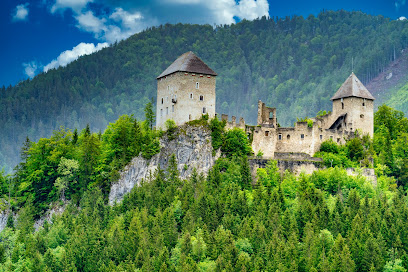
Unmissable attractions to see
Burgruine Wolkenstein
Experience the rich history and stunning views at Burgruine Wolkenstein, a must-visit destination for tourists and hiking enthusiasts in Austria.

Panoramaturm Wurbauerkogel National Park
Experience the stunning alpine views and diverse wildlife at Panoramaturm Wurbauerkogel National Park, a perfect destination for nature enthusiasts.

Kaiserau
Experience the thrill of skiing and the beauty of nature at Kaiserau, the premier ski resort and hiking area in the Austrian Alps.
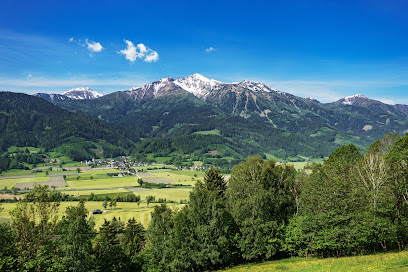
Burg Strechau
Experience the rich history and stunning views at Burg Strechau, a captivating medieval castle museum in the heart of Austria.

Wallfahrtskirche Frauenberg an der Enns
Discover the spiritual beauty of Wallfahrtskirche Frauenberg, a baroque masterpiece in Ardning, Austria, surrounded by breathtaking landscapes.

Burgruine Gallenstein
Explore the medieval wonders of Burgruine Gallenstein, where history meets breathtaking views in Sankt Gallen, Austria.

Kupferschaubergwerk Radmer
Discover the captivating world of copper mining at Kupferschaubergwerk Radmer, a unique tourist attraction in Austria's stunning mountainous landscape.

Gesäuse: Erlebniszentrum Weidendom National Park
Explore the breathtaking landscapes and educational wonders of Gesäuse National Park at Erlebniszentrum Weidendom, a true gem of Austria.

Kraushöhle
Explore the breathtaking beauty of Kraushöhle, a natural cave wonder in Gams bei Hieflau, Austria, perfect for adventure and nature lovers alike.

Bergsteigerfriedhof Johnsbach
Explore the Bergsteigerfriedhof Johnsbach, a serene cemetery honoring climbers amidst stunning Alpine landscapes, perfect for reflection and remembrance.
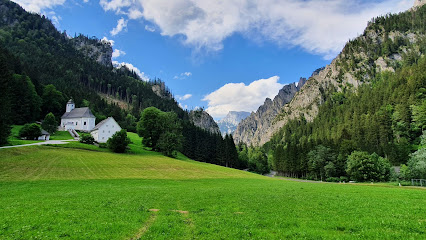
Magnesitbergbau Hohentauern
Uncover the secrets of magnesite mining at Magnesitbergbau Hohentauern, a unique tourist attraction in Austria surrounded by stunning mountain scenery.

Eisenerzer Schichtturm
Explore the Eisenerzer Schichtturm, a historic mining tower offering stunning views and a glimpse into Austria's rich industrial heritage.

Köhlerzentrum Hieflau
Explore the rich industrial heritage of Hieflau at Köhlerzentrum, a charming museum dedicated to the art of charcoal production in Austria.

Wassermannloch - Schwarze Lacke
Discover the serene beauty of Wassermannloch - Schwarze Lacke, a hidden gem offering stunning landscapes and outdoor adventures in Austria.

Themenweg „Lettmair Au“
Discover the serene beauty of Themenweg „Lettmair Au“, a stunning hiking area in Admont that captivates nature lovers and adventure seekers.

Essential places to dine
Der Kamper
Discover authentic Austrian flavors at Der Kamper in Admont - where tradition meets modern dining in a warm atmosphere.

Kölblwirt Johnsbach
Experience authentic Austrian cuisine amidst breathtaking alpine scenery at Kölblwirt Johnsbach.
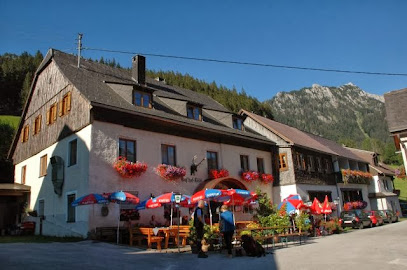
Restaurant Stiftskeller Admont
Experience authentic Austrian cuisine at Restaurant Stiftskeller Admont—where local flavors meet warm hospitality in a charming setting.

The Best Pizza & Kebab
Discover culinary bliss at The Best Pizza & Kebab in Admont - where authentic flavors meet cozy dining.

VISIT MEXIKO
Experience authentic Mexican flavors at Visit Mexiko in Admont—where every meal is a fiesta!

Markets, malls and hidden boutiques
Nationalpark Gesäuse
Explore the breathtaking landscapes, diverse wildlife, and thrilling outdoor activities at Nationalpark Gesäuse in Central Austria.

Café Konditorei Stockhammer
Discover the sweet taste of Austria at Café Konditorei Stockhammer, where delectable pastries and a cozy atmosphere await your visit.

PENNY Markt
Explore the best of local flavors and budget-friendly groceries at PENNY Markt, your discount supermarket in Admont, Austria.

Beliani.at
Explore Beliani.at, the ultimate furniture store offering stylish and eco-friendly home decor solutions for a modern living experience.

ADEG ZIMMERMANN
Experience the charm of Austria at ADEG ZIMMERMANN, your go-to grocery store in Admont for fresh local produce and unique regional specialties.
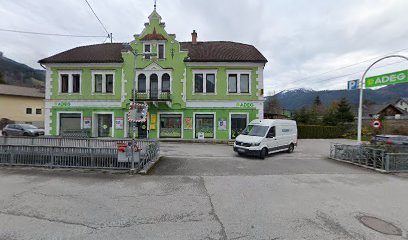
kaufdahoam.at
Discover the best of Admont at Kaufdahoam, your go-to natural goods store offering organic foods and local artisan products in a charming setting.

Liane Ivanics
Discover the essence of local culture at Liane Ivanics Kiosk, where fresh flavors meet friendly service in a delightful ambiance.

Barefoot Austria
Discover stylish and comfortable footwear at Barefoot Austria, a shoe store that blends quality with local craftsmanship for the perfect shopping experience.

Hallotag
Discover unique gifts and local crafts at Hallotag, the perfect destination for memorable souvenirs from your journey.

Little Püppi
Explore Little Püppi, the ultimate pet store where pet lovers find everything for their furry friends in a charming and friendly atmosphere.

LEDFactory
Experience the brilliance of innovative lighting solutions at LEDFactory, where style meets sustainability in every fixture.

Carla Admont
Explore Carla Admont, a unique second-hand store offering sustainable fashion and community support in the heart of Admont.
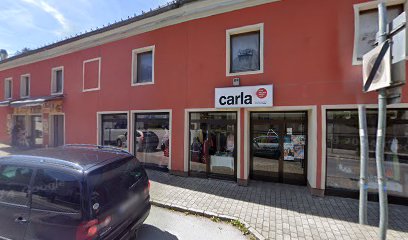
Greek Oil Company
Explore the authentic taste of Greece at the Greek Oil Company, where premium products and culinary traditions come together.

Picard Bags & Accessoires
Explore Picard Bags & Accessoires for exquisite leather goods and accessories, showcasing quality craftsmanship and stylish designs perfect for every traveler.

Hamacama Hängematten
Explore Hamacama Hängematten, a premier destination for high-quality hammocks, perfect for relaxation enthusiasts and travelers seeking comfort.

Essential bars & hidden hideouts
Der Kamper
Discover the authentic flavors of Austria at Der Kamper in Admont, where traditional cuisine meets a warm atmosphere.

Café Konditorei Stockhammer
Discover the sweet side of Admont at Café Konditorei Stockhammer, a pastry haven offering delightful treats and a cozy atmosphere.

Kölblwirt Johnsbach
Discover Kölblwirt Johnsbach: A charming restaurant and guest house serving authentic Austrian cuisine in a picturesque setting.

Stiftskeller Admont
Discover the heart of Austria at Stiftskeller Admont, where tradition meets taste in a cozy restaurant setting.

Gasthof zum Donner
Discover authentic Austrian flavors and stunning mountain views at Gasthof zum Donner in Johnsbach.

Klinke-Hütte
Experience the authentic taste of the Alps at Klinke-Hütte – a mountain cabin restaurant offering delicious local cuisine and stunning alpine views.
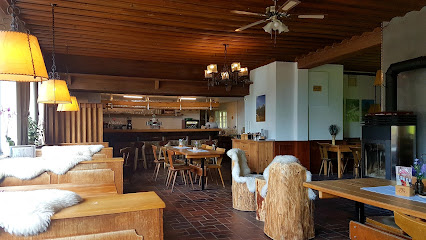
Pablo's Pub - Pub Gaishorn
Discover the delightful flavors of Pablo's Pub in Gaishorn am See, where grill favorites meet a cozy pub atmosphere for an unforgettable dining experience.

Restaurant Stiftskeller Admont
Experience the authentic taste of Austria at Restaurant Stiftskeller Admont, a culinary haven for travelers seeking local flavors and warm hospitality.

Café-Pub CENTRUM
Discover the vibrant atmosphere of Café-Pub CENTRUM in Admont, where locals and tourists unite over drinks and good company.

The Best Pizza & Kebab
Discover the flavors of Italy and the Middle East at The Best Pizza & Kebab in Admont, a top choice for pizza and kebab lovers.

Sportalm Kaiserau
Discover Sportalm Kaiserau, a restaurant in Admont where culinary tradition meets stunning mountain views in Austria.

Zeiringeralm
Experience the best of traditional Austrian cuisine and breathtaking alpine views at Zeiringeralm.

gutehrlichessen
Experience the finest catering service in Austria at Gutehrlichessen, where culinary artistry meets exceptional hospitality.

Grillhaus Jezercic
Experience the essence of Austrian cuisine at Grillhaus Jezercic, Liezen's premier gastropub offering delicious grilled specialties in a cozy setting.

Marampa Pub
Discover the vibrant atmosphere and local flavors at Marampa Pub, a top bar destination in Eisenerz, Austria, perfect for relaxation and socializing.
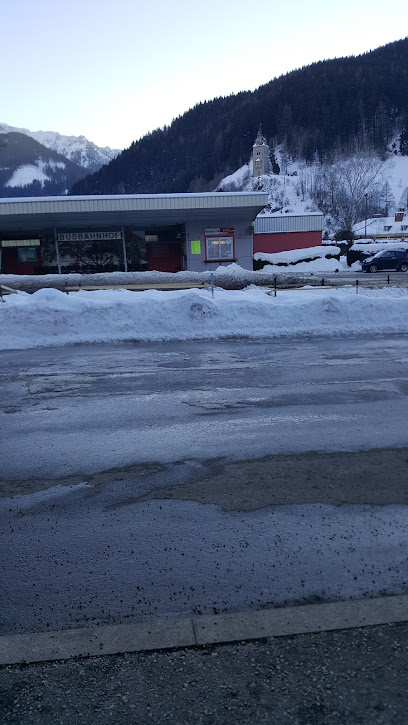
Local Phrases about Gesäuse National Park
-
- HelloServus
[ser-voos] - GoodbyeAuf Wiedersehen
[owf vee-der-zayn] - YesJa
[yah] - NoNein
[nine] - Please/You're welcomeBitte
[bitt-eh] - Thank youDanke
[dahn-keh] - Excuse me/SorryEntschuldigung
[ent-shool-dee-goong] - How are you?Wie geht es dir?
[vee gayt es deer] - Fine. And you?Gut. Und dir?
[goote oond deer] - Do you speak English?Sprechen Sie Englisch?
[shpre-khen zee eng-leesh] - I don't understandIch verstehe nicht
[eekh fair-shtay-eh neekht]
- HelloServus
-
- I'd like to see the menu, pleaseIch hätte gerne die Speisekarte, bitte
[eekh hett-eh gair-neh dee shpay-zeh-kahr-tuh bitt-eh] - I don't eat meatIch esse kein Fleisch
[eekh ess-eh kine flysh] - Cheers!Prost!
[prohst] - I would like to pay, pleaseIch möchte bitte zahlen
[eekh murk-teh bitt-eh tsah-len]
- I'd like to see the menu, pleaseIch hätte gerne die Speisekarte, bitte
-
- Help!Hilfe!
[hil-fuh] - Go away!Geh weg!
[geh vehg] - Call the Police!Rufen Sie die Polizei!
[roo-fen zee dee poh-leet-sigh] - Call a doctor!Rufen Sie einen Arzt!
[roo-fen zee eye-nen ahrts] - I'm lostIch habe mich verirrt
[eekh hah-buh meesh fair-eert] - I'm illIch bin krank
[eekh been krunk]
- Help!Hilfe!
-
- I'd like to buy...Ich möchte ... kaufen
[eekh murk-teh ... kow-fen] - I'm just lookingIch schaue nur
[eekh shou-eh noor] - How much is it?Wie viel kostet es?
[vee feel koh-stet es] - That's too expensiveDas ist zu teuer
[dahs ist tsoo toy-ehr] - Can you lower the price?Könnten Sie den Preis senken?
[kern-ten zee den pri-say zen-ken]
- I'd like to buy...Ich möchte ... kaufen
-
- What time is it?Wie spät ist es?
[vee shpayt ist es] - It's one o'clockEs ist ein Uhr
[es ist ine oor] - Half past (10)Halb (10)
[halb (tsehn)] - MorningMorgen
[mohr-ghen] - AfternoonNachmittag
[nahkh-mit-tahk] - EveningAbend
[ah-bent] - YesterdayGestern
[gehs-tehrn] - TodayHeute
[hoy-teh] - TomorrowMorgen
[mohr-ghen] - 1Eins
[ines] - 2Zwei
[tsvai] - 3Drei
[dry] - 4Vier
[feer] - 5Fünf
[foonf] - 6Sechs
[zeks] - 7Sieben
[zee-ben] - 8Acht
[ahkt] - 9Neun
[noyn] - 10Zehn
[tsayn]
- What time is it?Wie spät ist es?
-
- Where's a/the...?Wo ist ein/der...?
[vo ist ine/dehr] - What's the address?Was ist die Adresse?
[vahs ist dee ah-dreh-suh] - Can you show me (on the map)?Können Sie mir zeigen (auf der Karte)?
[kern-ten zee meer tsee-gen (ouf dehr kahr-tuh)] - When's the next (bus)?Wann kommt der nächste (Bus)?
[vahn kohmt dehr nekhs-teh (boos)] - A ticket (to ....)Eine Fahrkarte (nach ....)
[eye-neh fahr-kahr-teh (nahkh ....)]
- Where's a/the...?Wo ist ein/der...?
History of Gesäuse National Park
-
The stunning landscape of Gesäuse National Park has been shaped over millions of years. The park is located in the Northern Limestone Alps, and its dramatic cliffs and rugged terrain are a result of the collision between the African and Eurasian tectonic plates. The Enns River, which carves its way through the park, has also played a significant role in shaping the valley and creating the steep gorges that are characteristic of the area.
-
Archaeological evidence suggests that the area now known as Gesäuse National Park has been inhabited since prehistoric times. Early human settlers were drawn to the fertile valleys and abundant natural resources. The Celts were among the first to establish significant settlements in the region, leaving behind artifacts and traces of their culture.
-
In the 11th century, the Benedictine monks established the Admont Abbey near the park's current boundaries. The abbey became a center of learning and culture, influencing the surrounding areas. The monks were responsible for the development of agriculture and viticulture in the region, and their architectural and artistic contributions still resonate today. The abbey's library, one of the largest monastic libraries in the world, holds invaluable historical manuscripts.
-
During the Habsburg reign, Gesäuse became a favored hunting ground for the aristocracy. The dense forests and abundant wildlife provided excellent game hunting opportunities. This period saw the construction of numerous hunting lodges and trails, some of which are still in use today. The Habsburgs' patronage helped to preserve the natural beauty of the region, as large tracts of land were kept undeveloped for hunting purposes.
-
The 19th and early 20th centuries brought industrialization to the region, with logging and mining activities increasing significantly. However, the unique beauty of the Gesäuse landscapes also attracted early conservationists. The first calls for protecting the area emerged in the late 1800s, leading to the establishment of the park in 2002. This effort was driven by a desire to preserve the natural environment and maintain the ecological balance of the region.
-
Gesäuse National Park was officially established in 2002, covering an area of approximately 110 square kilometers. The park aims to protect the diverse flora and fauna, as well as the unique geological formations that define the region. Today, it is a haven for outdoor enthusiasts, offering activities such as hiking, climbing, and rafting. The park also serves as an important research area, with scientists studying its diverse ecosystems and species.
Gesäuse National Park Essentials
-
Gesäuse National Park is located in the Austrian state of Styria. The nearest major city is Graz, which has an international airport. From Graz, you can take a train or car to the park. The journey by car takes about 1.5 to 2 hours. Alternatively, you can reach the park from Vienna, which is approximately 3 hours away by car or train. Trains run regularly from both Graz and Vienna to the town of Admont, which is a gateway to the park.
-
Once inside Gesäuse National Park, the best way to get around is by car or bicycle, as public transportation options are limited within the park. Hiking is also a popular way to explore the park's many trails. If you prefer not to drive, taxis are available in nearby towns, and some hotels offer shuttle services to popular trailheads and attractions.
-
The official currency in Austria is the Euro (EUR). Credit cards are widely accepted in hotels, restaurants, and shops around the park. However, it is advisable to carry some cash, especially if you plan to visit smaller villages or engage in outdoor activities where card payment may not be an option. ATMs are available in Admont and other nearby towns.
-
Gesäuse National Park is generally a very safe destination for tourists. There are no specific high-crime areas targeting tourists. However, as with any travel destination, it is advisable to take standard precautions such as keeping an eye on your belongings, especially in crowded areas. When hiking, always follow marked trails and be cautious of wildlife. Inform someone of your plans before setting out on a long hike.
-
In case of emergency, dial 112 for immediate assistance. The local police and medical facilities are available in Admont. It is recommended to have travel insurance that covers medical emergencies and outdoor activities. For minor health issues, there are pharmacies in nearby towns where you can purchase over-the-counter medications.
-
Fashion: Do wear comfortable and appropriate clothing for outdoor activities. Layering is key due to variable mountain weather. Avoid overly revealing clothing. Religion: Do respect local religious customs, particularly when visiting monasteries and churches. Public Transport: Do be respectful and courteous to other passengers. Don’t eat or drink on public transport. Greetings: Do greet people with a friendly 'Grüß Gott' or 'Hallo'. Eating & Drinking: Do try local specialties and accept food offerings graciously. Don’t waste food; it is considered impolite.
-
To experience Gesäuse National Park like a local, consider visiting during the shoulder seasons of spring and autumn when the park is less crowded but equally beautiful. Engage with local guides for a richer understanding of the park's history and natural features. Don’t miss the opportunity to visit the Admont Abbey, which houses the largest monastic library in the world. Take time to enjoy a traditional Styrian meal at a local tavern, and consider participating in local festivals to immerse yourself in regional culture.
Trending Landmarks in Gesäuse National Park
Nearby Cities to Gesäuse National Park
-
Things To Do in Graz
-
Things To Do in Linz
-
Things To Do in Klagenfurt
-
Things To Do in Salzburg
-
Things To Do in Bad Gastein
-
Things To Do in Kranjska Gora
-
Things To Do in Zell am See
-
Things To Do in Bled
-
Things To Do in Maribor
-
Things To Do in Velenje
-
Things To Do in Český Krumlov
-
Things To Do in Eisenstadt
-
Things To Do in Kamnik
-
Things To Do in Sopron
-
Things To Do in Vienna











